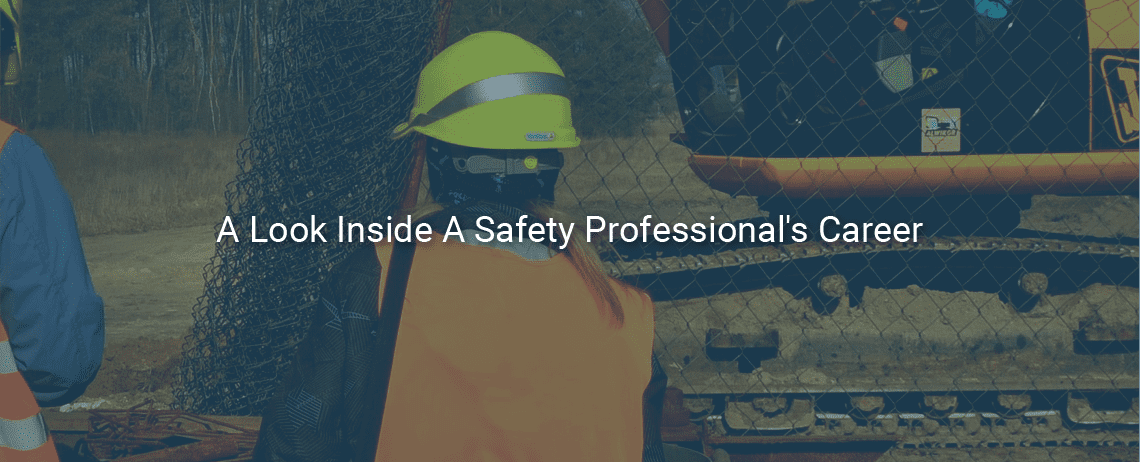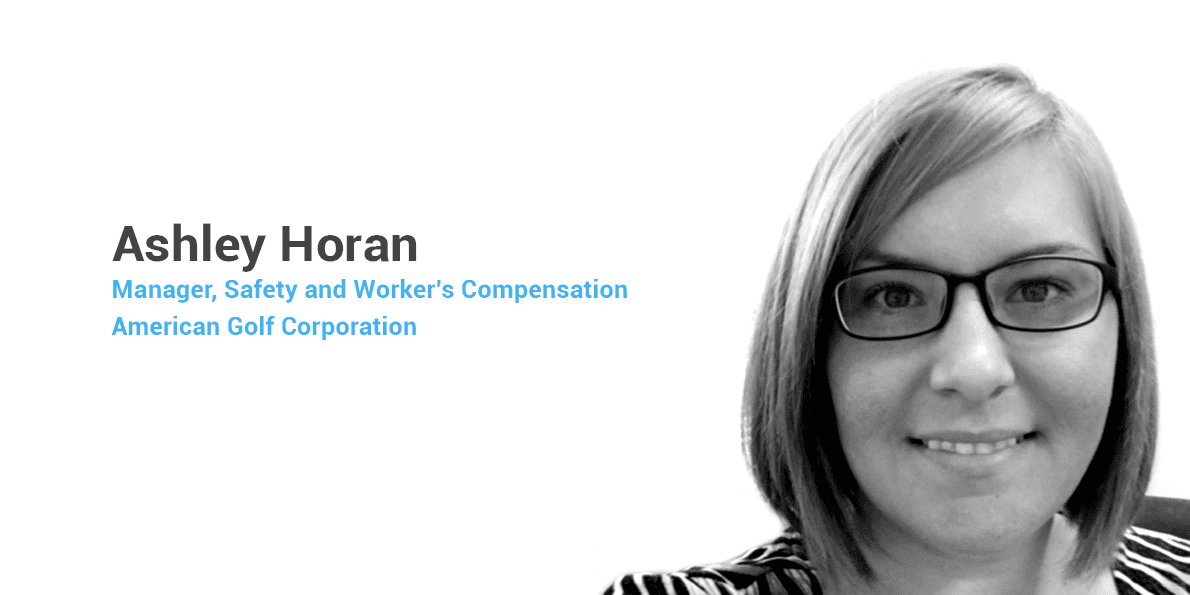A Look Inside A Safety Professional’s Career
Industry Trends | By | 23 Aug 2016 | 4 minute read

A great safety professional listens, takes action upon safety concerns, and feels real empathy towards fellow workers. Ashley Horan, Manager of Safety And Workers Comp at the American Golf Association, describes a good safety professional as someone who continuously work towards excellence and effectiveness. Ashley’s career began in Occupation Health and Safety when she joined the asset protection team at one of the largest nonprofits in Northern California. She soon transitioned into the role of Safety Coordinator in 2011 where her career quickly advanced to Director of Safety. Throughout her profession her job responsibilities have varied from general oversight of an organization’s safety program to workers’ compensation, hazardous waste management, general liability and a wide variety of other safety-related applications.

Ashley cites technology as an enhancement to her profession, making reports, audits and issues discoverable and documented. We take an inside look into her career and her thoughts on the safety industry as a whole.
1. What interests you about working in safety?
Being a Veteran, I thrive in environments that foster cohesion to achieve a common goal. I wasn’t drawn to safety as much as it perhaps “tripped and fell in my lap”. The CEO of Goodwill Industries of Sacramento Valley and Northern Nevada, my former employer, took a chance on a young professional and her abilities. Ultimately the organization and I benefited from my placement in this new role and off I went. I couldn’t imagine my life without the experiences I have gained through this incredible profession.
2. What are the biggest challenges safety professionals have?
This biggest challenge I have as a safety professional is staying on top of changing standards. In the past couple of years we have had many changes to the Heat Injury Prevention Standards specifically in the CA market as well as the Hazard Communication Standard across the country. Understanding these standard changes and developing the most effective way to implement them in your organization while maintaining current workload and pressures is a challenge.
3. Can you describe what you think makes a good safety professional?
There are a lot of personality traits that affect a person’s ability to be a good safety professional. The safety professional often performs a balancing act on a very thin wire. They balance an open-minded approach while narrowing in to dig deep on the smallest details. Stay results-driven while remaining humble. Empathize with your co-workers while following a standard set of developed principles.
"You must be able to be open-minded while being able to narrow in and dig deep on the smallest details."-
From a practical stance, you must be able to inspect, audit, or analyze and not just wash your hands of the issue when you leave while ticking off that you had visited that site for the year. You must be a proactive leader in your organization that systematically follows up on concerns derived from the inspections, audits and analytics. You must lead by example from the front and encourage others to do the same. Developing a sound safety culture with zero or few accidents is ultimately the end state for any good safety professional When you have achieved this you also know that your workforce is happy and productive but aware. It’s a good feeling!
The reverse is true for the safety professional that is in the profession for the wrong reason. This person is uninterested in the opinions of outside staff, task-oriented, narrow-minded, with a dry palate for knowledge, growth and innovation. This safety professional is concerned with quantity of inspections, audits and analytics instead of the quality of those items.
4. How has technology helped you in your job?
Technology, oh technology, how I love thee! Technology has helped me streamline so many processes. It used to take me a day or more to complete an audit or inspection, another day to complete the consolidation of information and develop a summary. With the paper versions, following up on various points and tracking the plan of actions for abatement was a nightmare. Tools like iAuditor, Dropbox, DocuSign and even simple tools like the Accuweather app are amazing! It provides up-to-date, real-time information available at your fingertips.
"Technology has helped me streamline so many processes."- Ashley Horan
I finished an inspection this week at a golf course and was about to conduct the review with the General Manager when he got out his note pad. I told him that he wouldn’t need the notepad if he would check his email. Waiting in his email was a draft copy of the inspection report I had completed. He was amazed and asked questions about the app to see if he could streamline his current paper inspection process. The technology that I use can be implemented at all levels of business not just for safety.
"Tools like iAuditor, Dropbox, DocuSign and even simple tools like the Accuweather app are amazing! It provides up-to-date, real-time information available at your fingertips."-
5. Is technology good for the health and safety industry and why do you think it is?
Technology is great for the health and safety industry. The world at large is immersed in technology. Technology in the health and safety industry is rapidly developing, thankfully. Our industry seems to play catch up to the organizations it serves over the years.
6. How can a safety professional stay up to date with the latest technology changes?
Well in this day in age you can Google just about anything. I however tend to find technology changes related to the safety industry in publications from American Society of Safety Engineers (ASSE), Loss Prevention Magazine and following blogs from industry resources such as SafetyCulture.
The safety profession is so broad and the duties of each industry vary. For every safety professional, their primary duty is to work towards the prevention of incidents that may cause injury or illness. In addition, they look to decrease damage to company property or equipment and anything that can harm the environment. With the introduction of technology and the reduction in the use of paper plus faster reporting and high-level insight into the organization’s safety practices as a whole, the industry is collectively working towards making safer workplaces for all workers.
Important Notice
The information contained in this article is general in nature and you should consider whether the information is appropriate to your specific needs. Legal and other matters referred to in this article are based on our interpretation of laws existing at the time and should not be relied on in place of professional advice. We are not responsible for the content of any site owned by a third party that may be linked to this article. SafetyCulture disclaims all liability (except for any liability which by law cannot be excluded) for any error, inaccuracy, or omission from the information contained in this article, any site linked to this article, and any loss or damage suffered by any person directly or indirectly through relying on this information.





